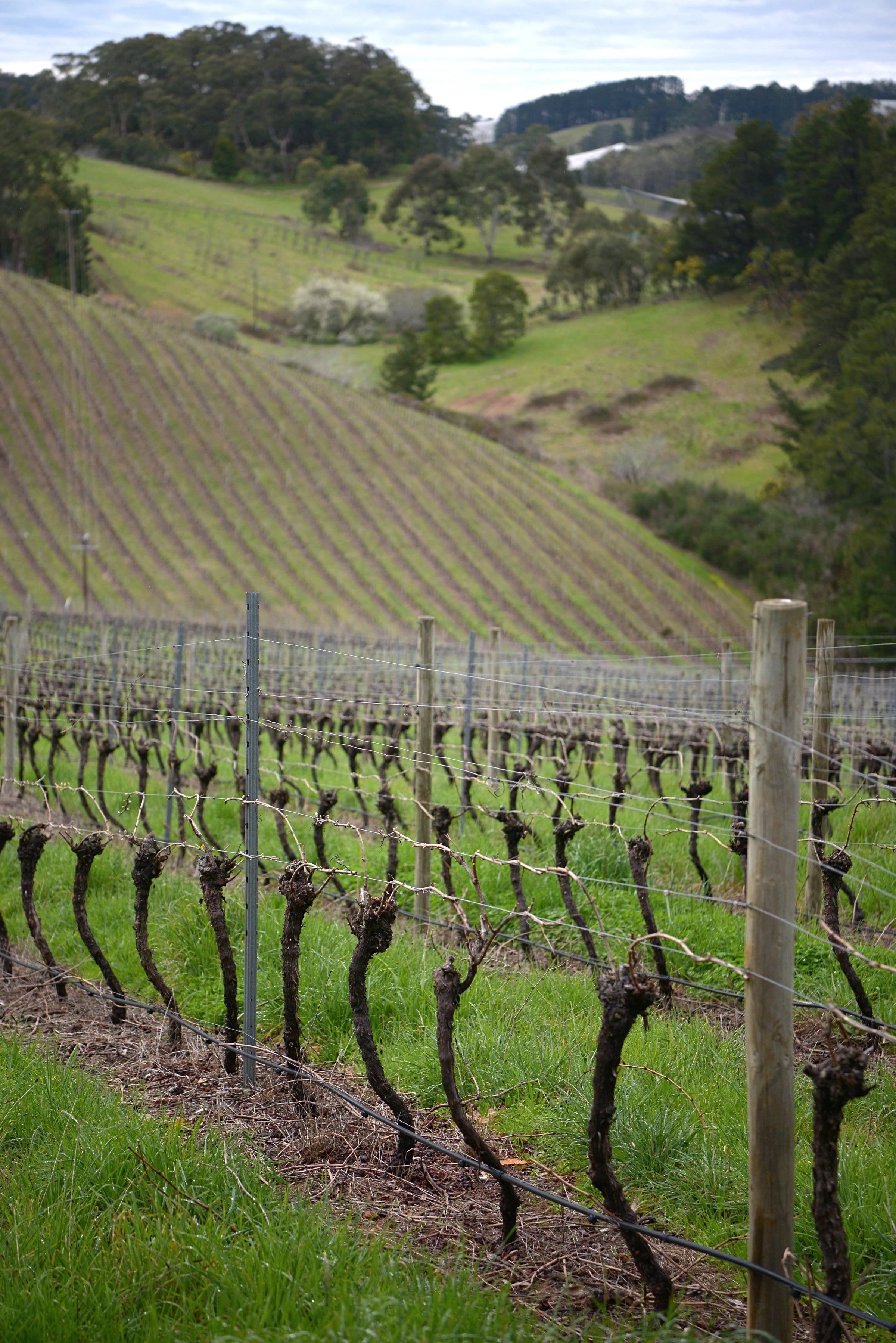Most of Australia’s wine appellations are situated in the eastern half of the country, in the states of South Australia and New South Wales. But within the vast expanse of Western Australia, which takes up nearly half the country’s land mass, is a tiny cluster of wine districts near the city of Perth. Having been there myself, let me say this: Looking at this remote corner of Australia on a map does not in any way do justice to the middle-of-nowhere-ness of the Frankland River Region, source of today’s powerful and distinctive red.
Getting to Perth alone feels like reaching one of the earth’s poles, but there’s still 300+ kilometers of driving to go before you reach the broad, rolling, seemingly unpopulated environs of Frankland Estate. Back in the 1950s, renowned American viticulturist and UC Davis professor, Harold Olmo, foresaw great potential in the Frankland region during an eight-month stint in Western Australia—and just like that, a wine region was born. Frankland Estate, founded in 1988, pays homage to Olmo in this Cabernet Franc-driven blend, which takes a few cues from Bordeaux’s Right Bank but charts its own, uniquely Australian course—and succeeds mightily because of it. I’ll admit that many of my favorite New World wines are those which emulate an Old World (i.e. European) model, but here’s one that delivers on its own terms. It isn’t merely “different” but completely viable—worthy of its own place of distinction among the world’s great “Bordeaux” blends. Oh, and the value-for-dollar is off the charts. Are you intrigued? I know I was!
Because I live in Napa and our company is based in Sonoma, most of the New World wines we offer come from California, with a healthy dose of Oregon Pinot Noir in the mix as well. But when I encounter a wine like today’s (or, for that matter, a killer Argentine Malbec, or a Central Otago Pinot Noir), I’m humbled by the sheer scale of the wine world. Wine is my life, and I’ve been lucky enough to travel as much as I taste, and still there’s this awareness of all there is still to learn. A wine like “Olmo’s Reward” finds its way to me and not only brings its place of origin back to life in my memory but gets me thinking about what I might be missing! Suddenly I’m looking at the wine map of Australia and puzzling over how to get back over there—which, I think, is about as strong an endorsement as I could give a wine, Australian or otherwise.
Located about 250 kilometers east of Margaret River (Western Australia’s lone appellation with any international fame), the Frankland River Region now includes a pretty substantial amount of vineyard acreage—though that wasn’t yet the case when Barrie Smith and Judi Cullam decided to diversify their “wool-growing” farm to include viticulture. Their first vineyards were planted in 1988 and have since expanded to cover about 30 hectares, all managed by the Smith-Cullam family and a tight-knit crew. Soils are gravelly loams over a clay and limestone subsoil, and the Frankland River, which runs down to the Southern Ocean (about 40 kilometers south), serves to moderate the climate year-round. Dr. Olmo is credited with “discovering” the region while in Western Australia studying the Swan Valley, a district just to the north of Perth; and yes, given the soil composition and climate, the comparison was made to Bordeaux.
And yet, in the end, this wine veers away from Bordeaux—albeit in an appealing and slightly wild way. Comprised of 57% Cabernet Franc, 37% Merlot, and 6% Malbec aged 18 months in 500-liter French oak puncheons, it’s a powerful but balanced wine with a distinctive mint/eucalyptus edge that for me is a telltale marker of Australian Bordeaux blends. In the glass, it’s a deep, not-quite-opaque ruby-black with crimson/garnet highlights, with seductive aromas of ripe blackberry, cassis, black currant, mint/eucalyptus, ground coffee, black pepper, and raw cacao. It is at once burly and luscious, and most importantly, powerful without being overpowering, thanks to well-preserved acidity. The wide diurnal temperature variations in the Frankland Valley allow for slower, more balanced ripening, enabling this wine to avoid a ‘syrupy’ fate; in fact, I think it’s got the structure for 10+ years of aging if you can keep your hands off it, which will not be easy to do. With 30 minutes in a decanter this is a plump and delicious red to enjoy now at 60 degrees in large Bordeaux stems, and will likely be the first wine I reach for at the first sign of cold weather this fall. Check out the attached recipe for a Gascogne-style
daube de boeuf, which incorporates a little chocolate; it’s a food-and-wine combination to warm body and soul. Cheers!




